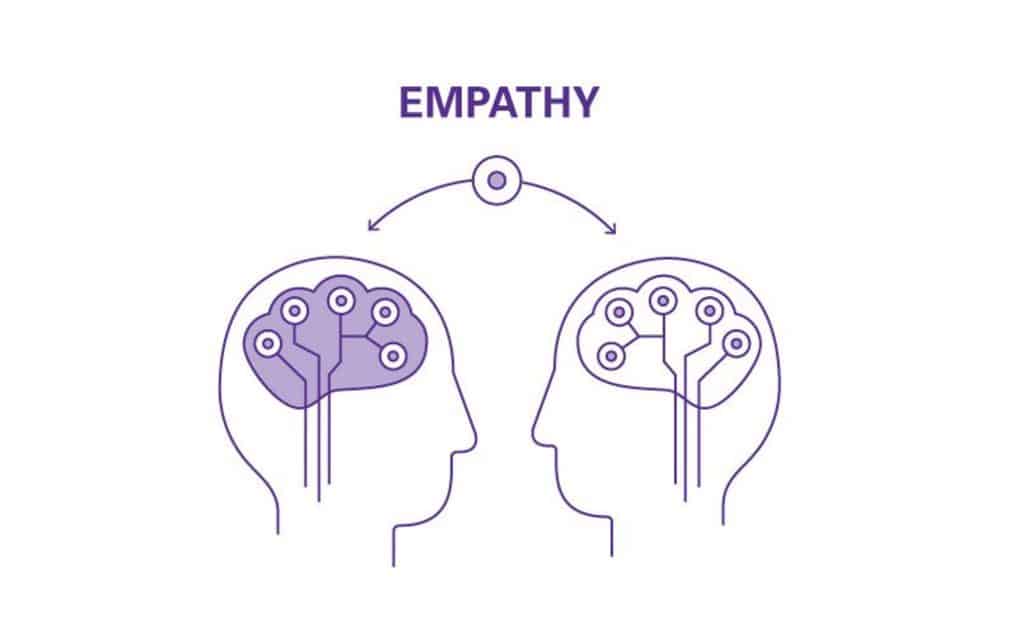I’ll be honest with you: application developers are making headlines, but they aren’t making much headway.
As a long-time app developer and entrepreneur myself, I have certainly encountered more than one CEO or CIO with their own mobile horror story. One minute they’re excitedly investing in mobile, and the next, they’re dealing with a frustratingly time-consuming process that results in an altogether disappointing application. So what’s going on?
Put bluntly? Mobile apps are ultimately failing to meet the needs, interests, or resources of their end-users.
In a 2015 mobile app performance study, 80 percent of end-users noted that they would delete a problematic app after using it only three times or less, and B2B app developers are commonly accused of “building their app for the wrong person”–namely, for themselves.
Caught up in their own technological optimism, mobile app developers have been rushing to the finish line without truly understanding the end-users they’re supposed to be working for. Which isn’t to point fingers–I’m actually speaking from experience.
That’s right, you caught me: I’m one of those app developers.

In 2014, I led the development of a health-tracking platform for patients with autoimmune conditions, and ended up failing to gain traction after a promising start.
The plan was supposed to be simple. My team and I would centralize patient data and connect existing patients with each other, as well as with proper care. We congratulated ourselves early: gathering the data to do so was certifiably easy, and we were sure our product was going to provide real-time solutions for people on the ground. I remember the golden days when, after a successful indiegogo launch, about 10% of our 5,000+ users were tracking their health every day.
Unfortunately, that confidence was premature. Over the next two years, we would learn the hard truths about keeping users engaged once the hype had fizzled out. We tried to design ourselves out of tepid user engagement using ever-flashier bells and whistles like gamification, better discussion forums, interactive health graphs, wearable integrations, even VIP invitations to real research studies – all to incentivize more tracking. But the spikes were always temporary. In the end, our product couldn’t deliver, and we failed to follow-through on the vision we had sold.
Looking back, what we should have been doing was far less digging in of our heels, and far more rapid prototyping with detached analyses of how users respond.
Instead of building more and more features for the caricature of our users we had built up in our heads, we should have been paying closer attention to what users already liked about our app, and used that to inform our decisions. What problems did our users have, and what problems did our app solve?
Put another way: We needed to find out why those 10% of users from before decided to keep coming back. And to do that we would need to be much more in tune with the day-to-day struggles they had, and seek to make their remaining problems that much easier to solve.
The secret turned out to be empathy. Putting yourself in the shoes of the people you want to help. There are a lot of reasons that app creators decide to build an app: money, creativity, strong opinions, and passion for change are the usual suspects. The common thread between all of them? None of them serve the user. (Yes, even your passion for change.)

That’s not to say that having noble intentions is a bad thing, but by failing to remember who the audience is when building a product you’ll never solve their problems, you’ll merely be building solutions that are begging for problems. Since our failure in 2014, my team and I have taken the lesson of empathy and put it front and center in our work.
As we learned more about building user-centered apps, we developed four core tenets that act as guiding lights to work towards for everything we do:
- Empathize with your users
- Focus on simplicity and usability
- Build something that you can see lasting 10 years
- Don’t cut corners
As we discuss each of these in-depth, we’ll discover how they relate to our commitment to a user-centered experience, and how that commitment gives us the best chance to turn technology into businesses that solve real problems. Starting with…
Empathize With Your Users
Sometimes clients come to Topflight thinking they need an app that does one thing, only to realize they really need an app that does another thing entirely. For example, one of our clients came to us needing a rebuild of their mobile app for expectant moms who want to track their baby’s biometrics, but after getting to know the client and their users’ needs, we helped the client realize that what was really needed was a revision of the app’s focus away from data collection and towards engaging the moms with celebrations of their baby’s progress as they grow.
We didn’t stop there though, throughout the entire development process–from wireframe to MVP–we did our utmost to make sure we kept the end-users and their problems in mind, while still being mindful of things like client branding and time-to-market. This commitment to thinking about the problems our users face forms the first tenet of our user-focused strategy: empathetic engagement.
The upside to being empathetic from the get-go is that we seldom have to go back to the drawing board when we realize users aren’t happy, or we aren’t actually solving their problem. With minimal passes through the development workflow, we can save our clients (and ourselves) time and money in the long run.
Learning what the users’ and clients’ problems are is simply one piece of the puzzle though. A solution is no good, however technically sound, if nobody wants to use it. That’s where the second tenet of our development process comes in: Usability.
Focus on Simplicity and Usability
I spoke before about problematic apps being abandoned early and often by end-users, but what does “problematic app” mean? Well in the case of the survey linked above, it means that most users will simply abandon an app if it doesn’t perform well, taking 4 or more seconds to load. But in our experience, if an app takes too long to load, has clunky navigation, or has confusing UX design and unexplained features, then users are far more likely to abandon your app for another, easier to use solution.
It’s easy to look at this pattern of abandonment and merely think “users are fickle” or “users are impatient”, but I see something much deeper. The findings from that survey, to my mind, highlight an important aspect of meeting users’ needs and gaining true adoption:
The app has to get out of the way of what they’re already doing.
In other words: if you’re trying to solve a problem the user already deals with every day, then chances are they already have their own system for addressing the problem, offline or otherwise. It’s important to keep in mind that these other solutions are what you’re competing against at the end of the day.
So then how do we compete? How do we develop experiences that professionals want to adopt into their workflows? Well, on our team we start the design process by asking ourselves some of the following questions:
“Why design 4 screens for a user to click through to get something done, when we can design 3 that do it just as well?”
“Why not make larger buttons so our visually-impaired users can see them effectively?”
“Are these animations serving a purpose, or are they just becoming distracting?”
Far from an exhaustive list, these are just some of the things we keep top-of-mind throughout the design and planning process. At every stage of development we have to be asking ourselves whether professionals will want to use what we’re building.
Experience has taught us that confusion and inefficiency are the main reasons that applications experience high drop-off rates, and the only way to change that is to offer users a tool that is simple, intuitive, and unobtrusive that they eventually find they can’t live without.
And it’s not just speed and usability we have to keep in mind either, it’s longevity.
Build Something That Lasts
Take a look at the average doctor’s office, retail space, or even a run-of-the-mill office. What you’ll often see is software from nearly 30 years ago still being used every day. Heck, I know someone who recently worked in a popular bookstore in the bay area that still used a point-of-sale system from the 90s with no graphical interface, it was all keyboard commands, all the time.
In these situations some might see an almost luddite-esque commitment to klugey technology from the past. Me? I see software that has stood the test of time, and still manages to solve the problems of its users. A shining example of what a robust solution can be for its users: reliable and sustainable.
Though we may be committed to simplicity, speed, and ease of use, we still know that it takes time to fully integrate a new software solution into your workflow. That’s why we want there to be no question: when a user decides to use our app in their work, we want them to stick with us for the long haul, and feel confident doing so.
To that end, we have committed ourselves to ensuring the longevity of our apps, a commitment that means we must always be cognizant of how well users are integrating our app into their day-to-day lives. If our users can’t imagine doing their work without our solution, and don’t intend to try, then we know we’ve succeeded.
Reaching that level of integration is tough, though, and it’s rare to get it right immediately from the get-go. That’s why a long-term commitment to maintenance and incremental change is at the heart of our approach to longevity. That commitment might mean consistent bug fixes, implementing quality of life improvements, and maybe most importantly in today’s fast-moving mobile climate: compatibility updates so that even users with older devices can continue to solve their problems with your app.
It might be hard to imagine people still using your mobile app in 30 years, but ensuring that they’re able to is still vital for bridging that gap between your user’s needs and the technology they use. Assure users that they can stick with you for as long as they have problems that need solving, and you’ll find yourself with the rabidly committed user-base that you always wanted.
And speaking of assurances…
Don’t Cut Corners!
Part and parcel of creating apps in almost every field–from business, to finance, to health and media–is complying with governmental rules, regulations, and guidelines. There are all kinds of laws surrounding privacy (HIPAA), best practices for security (especially in finance), and guidelines around copyright and fair-use in media.
Just like users should never have to worry about your app getting in their way, or becoming obsolete or unusable over time, they should never have to worry about whether an app compromises their device and their data, or whether the app they’re using will have to shut down for breaking the law. Being cavalier about data and security is a surefire way to lose the trust of your users.
And so for the final tenet of building user-focused apps, we always make sure that every mobile app we create complies all the relevant guidelines and laws. It’s often difficult, sure, but I firmly believe that following these guidelines is an ethical imperative and that it drives much of our team’s current success, despite the additional burden it puts on our shoulders.
For us, healthcare, fintech and ecommerce are our bread and butter, and so we pursue as many professional development opportunities in these areas as we can manage. But over time, we’ve developed a streamlined and efficient quality assurance process that is tailor-made to test the data protection and system security capabilities of each and every app we create. And because we gave such attention to these details, we are able to create regulation-approved mobile solutions regardless of the field of work we’re building for.

EmPath is the Best Path.
At the end of it all, we can summarize our four tenets very simply: great mobile solutions are born from having everyone on the team–from developers to designers–step into the shoes of the professionals and end-users they are looking to serve.
On our team, each of us has worked in, or founded companies that we’re proud to stand behind. We can offer our clients authentic solutions because we have vowed to put their needs and the needs of their users first.
Whether your concerns relate to privacy, accessibility, data management, or user experience, we know where you’re coming from, and we can see where you want to go.
Related Articles:

